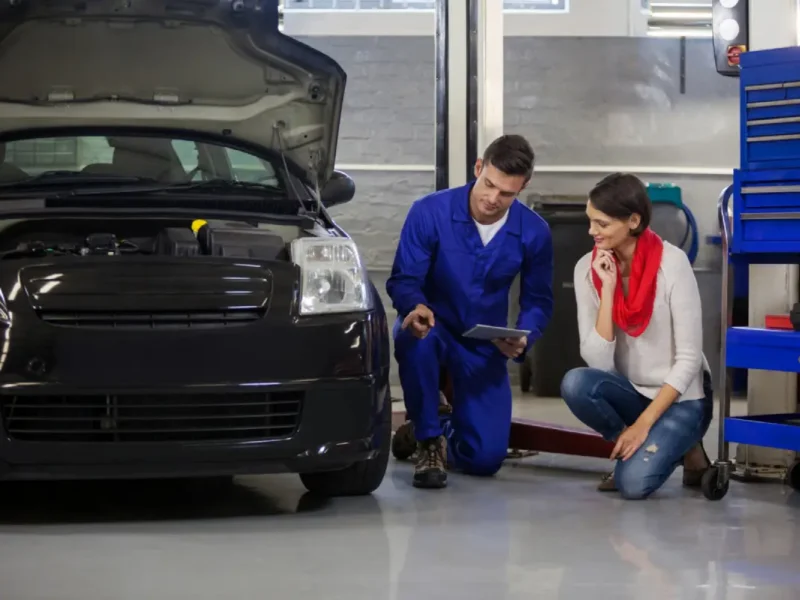Major cities worldwide are witnessing a significant transformation in urban mobility, driven by the rapid adoption of electric scooters. These scooters have emerged as a favored choice among eco-conscious commuters, students, and professionals due to their convenience and environmental benefits. A notable change is the diverse range of electric mobility options available on city sidewalks and bike paths. Commuters are increasingly deliberating between electric scooters, premium electric unicycles and e-bikes, which all offer promises of efficient, environmentally friendly travel.
Electric scooters are particularly appealing because they operate solely on electricity, thereby effectively reducing air pollution and carbon emissions compared to traditional gasoline-powered vehicles, such as cars and motorcycles.
Its shift toward micromobility is not merely a passing trend; it is part of a broader global initiative aimed at mitigating climate change. According to research by the World Economic Forum, utilizing micromobility options, such as electric scooters, can significantly reduce greenhouse gas emissions and alleviate pressure on overburdened urban transit systems.
Moreover, reduced road congestion leads to improved air quality and a decrease in noise pollution, enhancing the overall urban living experience. As governments and private sectors increasingly seek innovative climate solutions, the electric scooter movement represents a pivotal advancement in reimagining urban transportation. It contributes not only to the creation of cleaner, more sustainable cities but also promotes a shift towards a more livable urban environment for everyone.
Contents
Urban Mobility: Solving Modern Transportation Challenges
Commuting in densely populated urban areas often presents a range of frustrations that can disrupt daily life. From waiting for delayed trains to enduring the lengthy search for parking, conventional transportation methods usually fail to meet the diverse needs of commuters. It is where electric scooters come in: these agile vehicles provide a swift and effective means to connect the essential “last mile’ between public transit stops and a commuter’s final destination.
Recently, electric scooters have gained recognition as a crucial component of urban transportation networks, primarily due to their exceptional maneuverability and cost-effectiveness. Cities like Paris have implemented designated parking zones for scooters to facilitate their integration into urban infrastructure. At the same time, places such as Los Angeles have invested heavily in new developments, including protective lanes specifically for scooters and charging stations exclusively for e-mobility devices.
These multifaceted efforts not only cater to the growing number of scooter users but also play a crucial role in reshaping urban mobility patterns for everyone. With fewer cars occupying road space, cities can experience shorter travel times for public transport options, such as buses, resulting in a smoother transit experience and reduced stress on existing infrastructure.
Furthermore, even longtime car commuters are discovering the convenience of keeping a scooter in their trunk, allowing them to navigate unforeseen detours effortlessly. Ultimately, the rise of micromobility solutions, such as electric scooters, facilitates a more effective distribution of people throughout a city, contributing to reduced congestion and enhanced quality of life for all residents.
Safety First: Smart Tips for New Riders
With the growth of scooter use comes the need for responsible riding. Recent studies, including one by the Centers for Disease Control and Prevention (CDC), highlight that the vast majority of scooter injuries can be prevented with simple steps. Key among these is wearing a certified helmet—head protection reduces serious injury rates by as much as 60%, according to health experts. Riders are also encouraged to do a pre-ride inspection, checking for secure brakes, inflated tires, and a charged battery, which all help prevent issues before they arise.
- Always wear a helmet and ensure it fits correctly.
- Start slow—practice in low-traffic areas before moving onto busier streets or sidewalks.
- Use hand signals to communicate, just like cyclists do.
- Stay visible with reflective gear and lights at dusk or night.
- Stay alert and avoid distractions, such as using your cell phone.
Local laws often address important aspects, such as speed limits and the proper use of sidewalks for various forms of transportation, including biking and walking. Therefore, being thoroughly familiar with these specific rules not only promotes a safer environment for all individuals but also enhances the overall experience of commuting in shared spaces.
Sticking consistently to these positive habits contributes significantly to maintaining the enjoyment of riding while simultaneously minimizing potential risks for both the rider and fellow commuters, fostering a more harmonious and secure community for everyone involved.
Tech Trends Shaping Electric Scooter Designs
Electric scooter technology is advancing rapidly, keeping pace with the growing expectations of riders. What began as basic battery-powered rides has evolved into a market that prioritizes safety, performance, and seamless integration. Many models now feature digital dashboards that display speed, range, and maintenance warnings right on the handlebars. Robust locking systems—sometimes operated through apps—deter theft and make parking far more convenient for urban users.
- Smart connectivity: Riders can lock, unlock, and locate their scooters with their smartphones.
- Battery improvements: Modern batteries offer longer ride times and can be easily swapped out on the go, thereby reducing downtime.
- Weather resistance: All-season components protect against rain and temperature swings, appealing to a broader range of climates.
- Regenerative braking: This feature not only saves energy but also increases stopping reliability.
Such innovative technological advancements make it increasingly easier for daily commuters to seamlessly incorporate electric scooters into their busy and often hectic routines, while also appealing to city planners who are actively seeking scalable and sustainable transportation solutions.
User experience, as well as maintenance protocols and practices, are both receiving significant and noteworthy enhancements from these exciting advancements, indicating a promising and bright future where high-tech, state-of-the-art scooters are expected to be as commonplace and widely used as traditional bicycles in urban environments.
Counting the Savings: How Electric Scooters Cut Costs
Managing transportation costs is increasingly vital in today’s economy, particularly with fluctuating gas prices and rising car ownership expenses. Electric scooters offer a practical and economical transportation option, providing significant savings for those looking to manage their budgets effectively. For example, charging an electric scooter for a week can cost less than a gallon of gas, making it an exceptionally cost-effective choice for daily commuting.
Furthermore, maintaining electric scooters is remarkably easy. Unlike traditional vehicles, e-scooters don’t require oil changes, filter replacements, or extensive mechanical servicing. This simplicity typically leads to lower long-term expenses, as many repairs tend to be cheaper than those for cars.
Many urban riders report saving hundreds of dollars each year after switching to electric scooters for their daily commutes. Those who enhance their travel by combining public transport with scooter rides may find even greater financial advantages. Generally, electric scooters have minimal or no insurance requirements in many areas, reducing another consistent cost that car owners incur, like insurance premiums and maintenance fees.
In summary, these factors create a strong argument for electric scooters: they provide greater savings, less hassle regarding vehicle maintenance, and allow individuals to allocate more resources towards leisure, savings, or other daily needs. By embracing this mode of transport, individuals not only utilize buses or trains but also help foster a more sustainable urban environment.
What’s Next? Future Developments in Micromobility
Change is a constant in micromobility, and electric scooters are no exception. Around the globe, cities are not only rewriting the rulebook on transportation but also making significant investments in infrastructure to support this shift. Innovative features, such as solar-powered charging docks that harness renewable energy to power these vehicles, citywide parking networks designed to facilitate easy access and reduce clutter, and seamless integration with smartphone transit ticketing services, are already being implemented in various pilot programs.
The overarching aim is to create a seamless travel experience that optimally combines different modes of transportation, including buses, trains, bikes, and scooters, thereby enhancing urban mobility and reducing dependency on personal vehicles.
Additionally, advancements in material science and battery technology are on the horizon, with new lightweight materials and smarter batteries expected to significantly boost the range, efficiency, and safety of electric scooters. Policymakers are increasingly recognizing the myriad benefits of embracing a micromobility-rich environment, which promotes healthier urban living, decreases traffic congestion, and contributes to lower greenhouse gas emissions.
This recognition is likely to accelerate the transition towards greener, more efficient urban transport systems. As these technological and infrastructural elements converge, we can expect electric scooters—alongside premium electric unicycles and e-bikes—to become integral components of sustainable, healthy city lifestyles, ultimately enhancing the quality of urban life.



